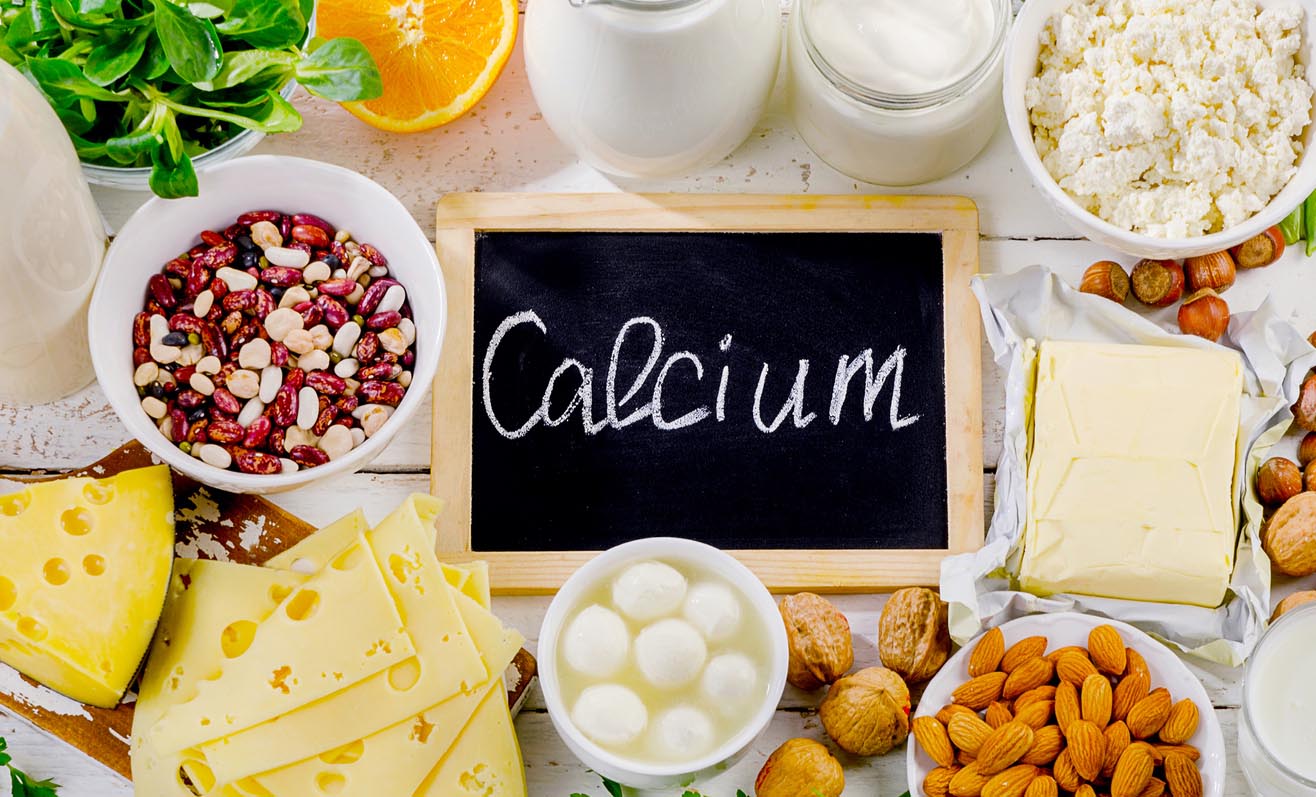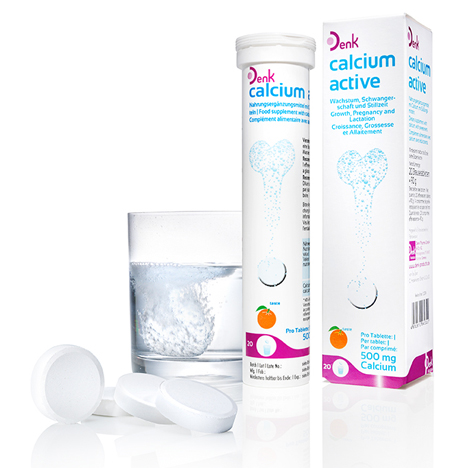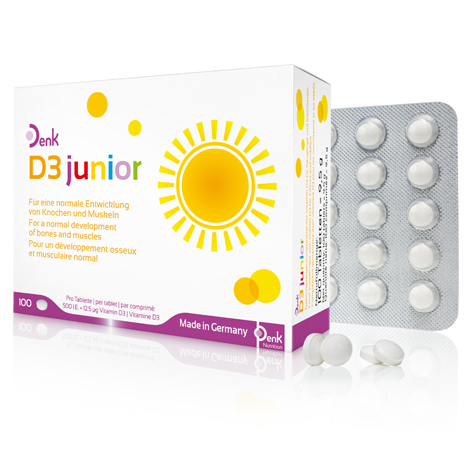
Calcium – the vital mineral
How important is the mineral calcium?
It is not only a vital mineral but, in terms of quantity, it is also the most important mineral in the human body: there is around 1 kg of it in the body, making it one of our major minerals. Around 99% of calcium takes the form of certain phosphorus compounds (hydroxyapatite) in the bone tissue and in the teeth – only around 1% is distributed to the blood and the extracellular spaces, i.e. the substances between the cells. Calcium performs many functions in the body: It is fundamentally responsible for the mineralisation of bones and teeth as well as for the formation of hard tissue. An adequate supply of calcium is important for healthy growth and the smooth functioning of the metabolism. It is also involved in blood coagulation and numerous processes relating to cells, muscles and the nervous system.
How does calcium metabolism work?
Calcium metabolism refers to all processes involving the absorption, distribution, storage and excretion of calcium. The aim of calcium metabolism is to establish a kind of balance of calcium ions in all bodily fluids (homeostasis = physiological mechanism to maintain equilibrium).
Three hormones are involved in regulating calcium metabolism:
· Parathyroid hormone
· Calcitriol (produced from vitamin D3)
· Calcitonin
The three hormones influence the absorption of calcium in the small intestine, the excretion of calcium via the urine and the absorption or release of calcium in the bones.
If the calcium level is low, more parathyroid hormone is produced and released in the parathyroid cells. Parathyroid hormone then reaches the kidney and stimulates the formation of calcitriol. Parathyroid hormone and calcitriol both promote the release of calcium from the skeleton at the bone. In the small intestine, calcitriol promotes the absorption of calcium, while parathyroid hormone in the kidneys reduces the excretion of calcium. As a result, the calcium level rises and a calcium balance can be restored.
However, if the calcium level is high, more calcitonin is released from the C cells of the thyroid gland. At the bone, calcitonin inhibits the release of calcium from the skeleton. Calcitonin also stimulates the excretion of calcium in the kidneys. Via these two mechanisms, calcitonin reduces the concentration of calcium and a balance is restored.
In the event of minor deviations from the balance, compensation mechanisms in the intestine and kidneys are usually sufficient to restore a calcium balance. It is only when these regulatory mechanisms fail that calcium is released from the bones, resulting in a loss of bone mass.
Vitamin D is fundamentally necessary for the absorption of calcium as it is a precursor of calcitonin. In healthy people, the concentration of calcium in the blood should be between 2.1 mmol/l and 2.6 mmol/l.
Why does the body need calcium?
Healthy bones
The total bone mass of a body is between 12% and 15% of the body weight – it tends to be slightly lower in women than in men. Bone mass refers to all components of the skeletal system. The mineral part represents the actual bone-forming “material” and consists mainly of calcium. Bones also contain bone marrow, the periosteum, fatty and hematopoietic body tissue, nerves and blood vessels as well as blood plasma and lymph.
The bone tissue also “renews” itself at certain intervals. In specific terms, this means that old cells are exchanged for new ones as part of cell renewal. Every year, osteoclasts break down around eight to ten per cent of the old bone tissue and osteoblasts rebuild it.
The speed at which this process renews the entire skeleton depends on the hormone balance and can slow down with age.
Teeth and jaw
Teeth consist mainly of dentin, a hard, bone-like substance. Around 30% of dentin consists of a cell-free basic substance into which collagen fibres and minerals are incorporated, including calcium. It is also indispensable for tooth enamel: 97% of this is comprised of a phosphorus-calcium compound (hydroxyapatite). It is also important that teeth, which are frequently exposed to mechanical stress, are firmly anchored into the jawbone. The stability of the jawbone can only be permanently guaranteed with a sufficient supply of calcium.
Nerves and muscles
Calcium is jointly responsible for the transmission of stimuli and thus for the excitability and control of nerves and muscles. Only the influx of calcium ions into the muscles causes contraction. Calcium deficiency can therefore become noticeable, for example, in muscle tremors or cramps.
Blood coagulation
Among other things, coagulation factors are involved in the complex processes of blood coagulation. These are proteins that are cleaved and thus activated under certain conditions. The coagulation factors, in turn, initiate the “coagulation cascade” (a precisely coordinated process in which the coagulation factors become active in a defined sequence and activate certain enzymatic processes), which ultimately forms the basis for plasmolytic blood coagulation. There are twelve different coagulation factors that are numbered with Roman numerals. Calcium is factor IV.
Calcium deficiency and oversupply
The calcium requirement for adults is usually 1000 mg/day. The requirement cannot always be met by a person’s diet. Calcium deficiency can be caused by temporary circumstances (e.g. pregnancy or lactation) but also by permanent factors such as a genetic predisposition. In both cases, a blood test should provide information on how the person’s diet should be changed and whether calcium should also be taken as a dietary supplement.

Possible causes of calcium deficiency
· Low-calcium diet
· Lack of vitamin D, which supports the absorption of calcium
· A genetic predisposition
· Hormonal disorders
· Certain diseases (e.g. of the thyroid glands or kidneys)
· Increased alcohol consumption
· Smoking
· Competitive athlete
· Certain medicines (diuretics, cortisone, anticonvulsants)
· Hyperphosphatemia (excessively high phosphate levels in the blood)
The following tips help to support the calcium supply:
Sufficient vitamin D
Vitamin D is indispensable for a good absorption of the mineral. It is responsible for calcium being absorbed through the intestines and transported into the blood. Vitamin D can only be absorbed to a small extent through food (butter, oily fish). It is mainly produced by the body itself under the influence of the sun’s rays.
The phosphate-calcium ratio must be right
The phosphate-calcium ratio must be such that no more phosphorus than calcium is absorbed by the body. Why? The body always strives to achieve a balanced calcium/phosphate concentration. If the phosphate concentration is higher than the calcium concentration, the body uses the calcium reservoirs (e.g. the bones) to establish a balanced ratio. Since phosphate is much better absorbed by the body (approx. 60%), approximately twice as much calcium has to be absorbed to avoid imbalances. Phosphate is not only better absorbed, but is also contained in numerous foods (meat, sausages, cola drinks, convenience products) that can be found in every diet today.
Vitamin K and vitamin C
Vitamin K also plays a role in optimal calcium utilisation. Proteins linked to vitamin K bind calcium, which improves the incorporation of calcium into the bone substance. Vitamin C stimulates the osteoblasts (bone-building cells).
Avoiding calcium channel blockers
Certain nutrients impede the absorption of calcium. In addition to phosphate, these are mainly oxalic acid and phytin. Calcium forms poorly soluble complexes with both phytin and oxalic acid. Phytin occurs, for example, in freshly ground cereals. Oxalic acid is contained in chard, spinach, chocolate, rhubarb and beetroot.



